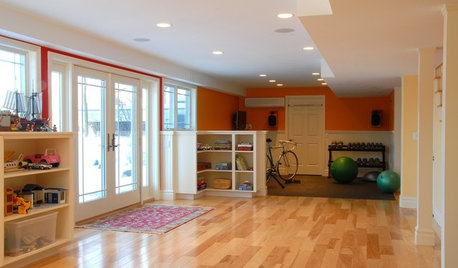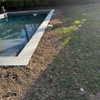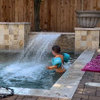pumps and energy consumption
flchad
15 years ago
Related Stories

GREEN BUILDINGHouzz Tour: See a Maine House With a $240 Annual Energy Bill
Airtight and powered by the sun, this energy-efficient home in a cold-winter climate is an architectural feat
Full Story
GREEN BUILDINGZero Net Energy: A Hardworking-House Term to Know
Homes that consume only as much energy as they produce by renewable means are a goal for builders. Learn what ZNE means for you
Full Story
CONTRACTOR TIPSBuilding Permits: What to Know About Green Building and Energy Codes
In Part 4 of our series examining the residential permit process, we review typical green building and energy code requirements
Full Story
GREEN BUILDINGHouzz Tour: See a Concrete House With a $0 Energy Bill
Passive House principles and universal design elements result in a home that’ll work efficiently for the long haul
Full Story
BARN HOMESHouzz Tour: An Energy-Efficient Barn Graces the Nebraska Landscape
Passive-house technologies and a rain-harvesting and greywater system conserve natural resources in this weekend country home
Full Story
MORE ROOMS12 Colors to Pump Up Your Home Gym
Peeling gray walls not inspiring your workouts? Exercise your right to a motivating space with these stylish paint picks
Full Story
REMODELING GUIDESBoost Your Energy With Natural Light
Abundant natural light saves electrical energy and can lower energy bills, but the best benefit may be to your own energy and spirit
Full Story
GREEN BUILDINGOff the Grid: Siting and Building to Conserve Energy
Look to low-tech solutions for big energy savings when you’re constructing a home
Full Story
GREEN BUILDINGEasy Green: 10 Ways Toward a Zero-Energy Home
Imagine never paying an electric bill again. With a zero-energy home, it's possible — and anyone can make it happen
Full Story
HOUZZ TOURSHouzz Tour: Zero-Energy Renovated Victorian in San Francisco
A 1904 home that's entirely energy efficient? Yes, courtesy of solar panels, radiant heating and water reclamation
Full StoryMore Discussions









deeker
trhought
Related Professionals
Desert Hot Springs Landscape Contractors · Englewood Landscape Contractors · Golden Gate Landscape Contractors · Hurricane Landscape Contractors · Kerman Landscape Contractors · Leicester Landscape Contractors · Mastic Beach Landscape Contractors · Merced Landscape Contractors · Metairie Landscape Contractors · North Highlands Landscape Contractors · Palatine Landscape Contractors · South Hackensack Landscape Contractors · New Carrollton Landscape Contractors · Lancaster Decks, Patios & Outdoor Enclosures · Glendale Decks, Patios & Outdoor Enclosuresmas985
trhought
Rack Etear
trhought
deeker
flchadOriginal Author
deeker
Rack Etear
deeker
mas985
flchadOriginal Author
mas985
deeker
trhought
afnajs
mas985
trhought
mas985
deeker
trhought
productmanager
deeker
afnajs
deeker
afnajs
trhought
eaa795
deeker
landa_mac
productmanager
trhought
productmanager
trhought
peterl1365
productmanager
mas985
socaled
socaled
banker74
landa_mac
mas985
trhought
Rack Etear
poolguynj
banker74
poolguynj
trhought
Marc Well